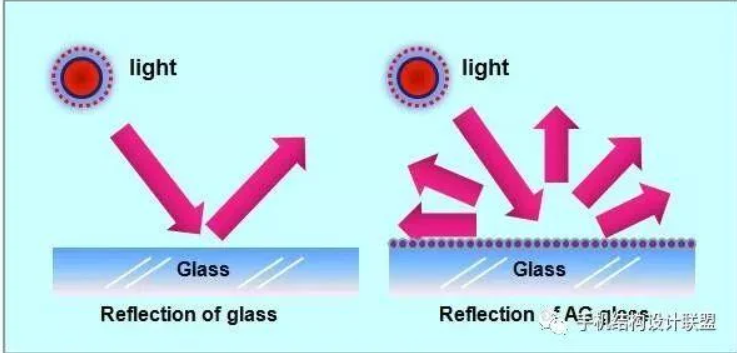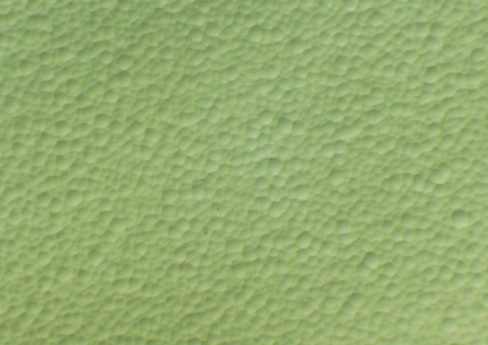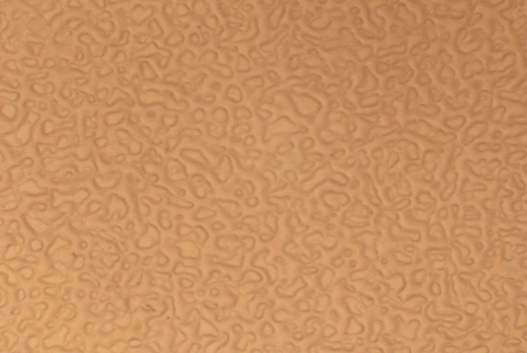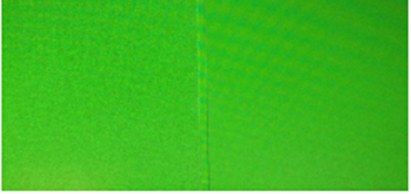Q&A
-
Anti-Glare (AG) glass
The theory of AG glass is processed by the tiny concave and convex processing technique in the glass surface to protect the direct light to the eyes also reduce the light glare and reflection.
Its feature is to make the glass surface reflective light turned into matt and no refection.
Apply AG special processing to the qualified double-sided or single-sided glass, can make the light’s reflection reduce from 8% to 1% below. The effects will bring the viewer the best visual experiences also upgrade the LCD display functions.
The main principle is through the light scattering and diffuse reflection to diminish viewer feel dizzy and dazzling to create a crystal clear visual space/entertainment.

-
Types of AG processing glass
There are 3 types of AG glass:
Chemical etching AG (GCM AG), Spraying AG and Sandblasting AG
Spraying AG: through the spraying equipment to spray the coating adhesive to the glass surface. As spraying coating pass through spray gun or disc atomizer, by way of the pressure or centrifugal force to spray tiny fog drop evenly into the glass surface.
Strongpoint: easy and fast, high effectivity. Easy to process different kinds of gloss and haze AG glass. A certain amount of spraying processing used in AG market.
Weakness: Difficult to have apparently adjustment for AG standard gloss and roughness. As the living environment and people usage habits will be caused AG coating peeling that the end-user often require vendor to provide additional physics and chemical analysis report.
Moreover, AG surface abrasion resistance tested by steel wire friction is only 2,500-4,856 times (max. 5,000 times) which compared with Chemical etching AG test have 2-3 times difference.
Chemical etching AG (GCM AG): Though processing is stronger than Spraying AG and Sandblasting AG, Chemical etching AG requirement for mother subtract is most strict than others. As isotropic etching processing characteristic will be enlarged mother subtract defect up to 3-5 times.
For example, Mother subtract supplier specification that within 100um defect can be deemed as compliant glass. Ex. If one defect size 50um in the mother subtract, after chemical etching processing can be enlarged to at least 150um which is very easily inspected by human visual inspection. Not to mention cannot meet the customers shipping requirements.
Sandblasting AG: Use mechanical sandblasting to implement. By tiny particle ceramic beads as intermediate, the sandblasting processing pass through machine’s pressure to spray into the glass surface. This polished processing is more mature technique, by way of change medium material/dimension to control the processed surface roughness, to make the surface meticulous.
Strongpoint: workflow simple, continuous production, high effectivity, and friendly environment.
Weakness: Processed glass is easily broken and chip on edges. Quite majority used among household items and architecture items, like office curtain walls, bathrooms, windows, doors etc.
Chemical etching AG (GCM AG): Use special chemical processing to implement. Its feature is to make the glass reflective surface light turned into matt, no refection. Diminish the reflection’s influence, not only anti-glare but also lower the reflective light, reduce the light and shadow. Moreover, antiseptic, anti-scratch resistant, provide the solution of the electrical display and image monitor circumstance reflection.
Etching AG is kind of chemical etch (roughness Ra), GCM etching thickness (roughness Ra) technical ability is between 0.8~0.05um. Etch processed AG surface essence character still belongs to glass, physics and chemical characteristic, product life cycle are all equivalent to tempered glass. Therefore, end-user won’t require the additional physics and chemical analysis report.
Besides above-mentioned, GCM etching processing glass offer a wide range of parameter roughness (0.05~0.7um), gloss (GCM highest to GU145) and transmission rate (>90%, etching AG will not influence glass inner essence transmission rate). Therefore, GCM strongly believe that Chemical etching AG will be the top priority of future’s high-end touch panels markets.
Etching AG OM schematic diagram:
Currently, the market is flooded with so called “etching AG”, but the anti-glare function is either not as predicted or non-etching AG processing. From below OM schematic diagram, we can distinguish “etching AG”, “non-etching AG” and “fake AG” structure difference.
Left diagram: Normal chemical etching structure, easily view the circled granule structure.
Right diagram: From microscope observation that merely soaked in the etching liquid or use spray etching processing’s top view structure which is not etching forming at all.


-
AG glass parameter List
.png) ,
,
Except these parameters, there are “Sparkling” which belongs to end-user’s subjective identification for the glass visual appearance. The high/low gap between sparkling requirement depends on end-user display technique.
Ex. PPI resolution, like pixel density which means the high numbers represent display effect meticulous. However, it doesn’t mean sparkling low is the end-user requirement. It should match end-user display specification and demand to choose appropriate sparkling glass. (Below left: Sparkling high; below right: sparkling low)
Nowadays, thousands of vendor’s instruments can be claimed to detect sparking, however, after auto display T1 factory measured that even cannot beat the result of human’s eyes visual inspection. So GCM suggest pls provide “both side acceptable boundary sample” for future production reference.
GCM sparkling judgement rule: Iphone 6s, 1334x750 pixel, 326ppi green background, naked eyes observation.

-
Correlation between AG glass optical parameters and visual effects
As we known, semiconductor wafer parameters have absolutely correlation relationship with electricity. While glass material is different. Glass application mainly focus on exterior device appearance. End-user often choose their favorite glass by visual effects which is easily change their mind by personal subjective priority and backend display technique.
GCM etching processing skill, for example, under the same condition of GU80, GCM can process at least 3 different kinds of visual effects (light tube reflection most clarity, middle clarity and visual vague; the sparkling and roughness are different too). That’s the reason why GCM need to confirm again and again with end-user what’s their visual effects requirements.
-
AG glass processing sequence order
Processing sequence order: mother subtract -> AG etching processing-> tempered process -> following CNC/AR/AF/AS coating processing.
AG etching processing will be according with mother subtract size, thickness, final product size and its non-quality area. -
Will processed AG glass thickness reduction
YES! Pls take both mother subtract thickness and processed etching AG thickness reduction for consideration if the end-user concern thickness requirements.
Ex. Japan CG 1.8mm thickness mother subtract for in-coming quality assurance tolerance is 1.8±0.10mm. But the truth is quite majority in-coming mother subtract thickness toward lower limit which between 1.72~1.76mm, few thickness are >1.78mm.
If end-user choose etching AG to GU80, light tube middle clarity, Ra<0.15 option, after processed etching glass thickness will be reduced approximately 0.12~0.15mm. Estimated these toward lower limit CG mother subtract after etching processing, the final thickness range will be reduced to 1.595mm lowest ~1.655mm highest.
Definitely cannot meet the end-user final thickness requirement if 1.8±0.1mm. For this case, GCM will recommend etching processing glass final thickness tolerance is 1.7±0.15mm.
-
AG glass options and purchase guideline
- GCM can quote if end-user merely offer glass parameters?
INCORRECT! As item 4 mentioned that the same gloss conditions, GCM can offer several kinds of visual effects.
To proceed with proper procurement, GCM recommend pls provide the complete optical parameters and actual sample. GCM welcome you to contact with our sales window for require AG processed etching CD case for further AG processing confirmation.
Meanwhile, different types of mother subtract after etching processed which glass final visual appearance effects could be different. Ex. Japan brand: AS2 vs. CG, under the same GU80 conditions, AS2 visual appearance effects will be more clarity than CG. - End-user require “visual foggy AG”. Does it mean the etching AG processing parameters “Haze” is high?
INCORRECT! As Haze and visual foggy effect does not have absolutely correlation. As (1) explanation, GCM have to check the end-user actual sample first, then confirm optical demands & final visual appearance effects. Merely single optical parameter CANNOT be judged what’s the final visual result. - Extracted by customer message: “There’s a new developing project recently, we only have some limit optical data, need some time to figure out end-user actual optical specifications. Also have to match with currently technique or this newly developing display technique etc. Under this condition, how could we choose AG processing glass?”
GCM welcome you to visit us to advise your temporary optical specification (or bring actual sample), GCM will do our best to provide the professional experiences and sample bank to assist you the acquire most similar visual appearance asap.
- GCM can quote if end-user merely offer glass parameters?
-
GCM capacity and processing ability
Pls refer GCM company profile.